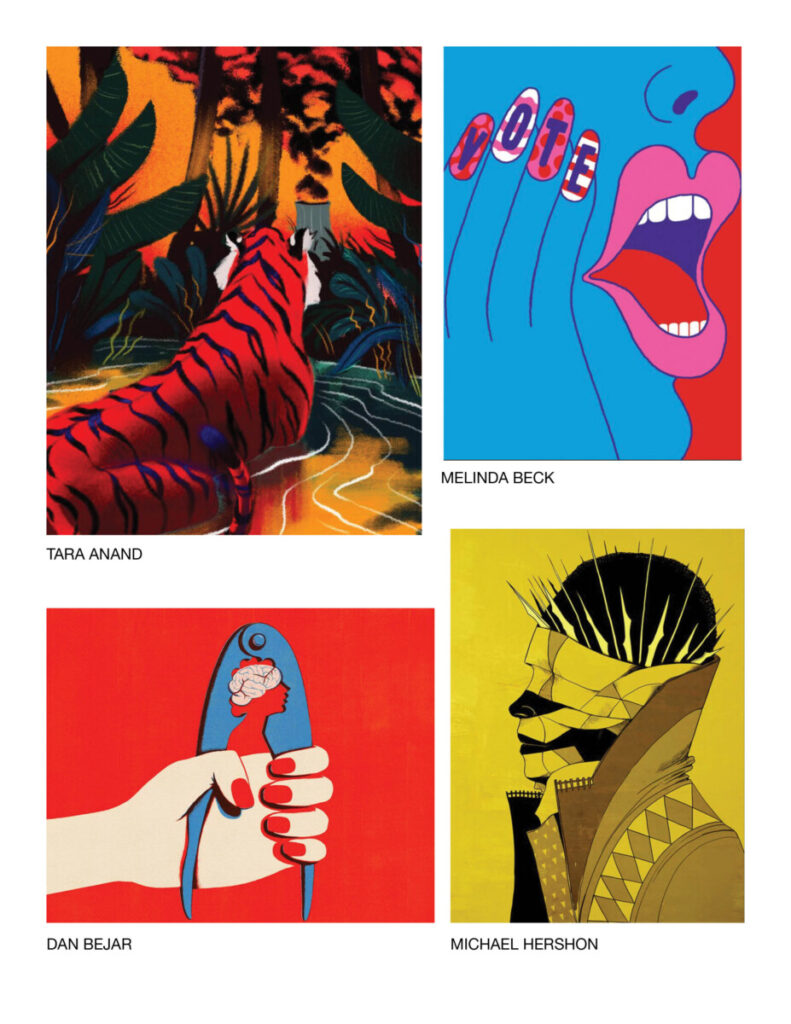
Choose an illustration which makes strong use of a limited palate. (5 colors or less ) Share it along with a few sentences about why you chose it, who the artist is, and how the artist uses Color Theory in the composition.
- Deconstruct the illustration: Who created it and what process and media do you they use or what media do you think they used it is not listed.
- Share links to more of their work or their personal website.
- What does Color Techniques does the illustrator use?
- Why do you consider them effective?
Look for an illustrator who peaks your interest. Look in ads, magazines, Society of Illustrators, comics, etc.





Recent Comments